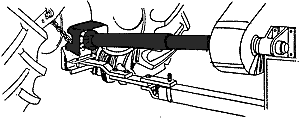Do you know someone who has been hurt by a power takeoff? Just about every farmer does. Like many farm machines, a power takeoff, or "PTO," can be a useful tool—or a lethal one. Used in the right way, a PTO can safely power your augers, mowers, choppers, and other implements. Used in the wrong way, a PTO can rip off your arm, crush your skull, or sever your spine.
In Minnesota, PTOs have killed more than a dozen farm people and maimed hundreds of others in the past ten years. Don't endanger yourself or your loved ones by underestimating the power of a PTO.
Lethal SpeedA PTO can spin around 1,000 times per minute. That's 16 times per second! Toss a six-foot rope over a spinning PTO. It'll wrap around the shaft in less than a second. Now, imagine that rope is your shoelace—or your sleeve. How fast could you pull free? You'd need nearly a full second just to realize you'd been caught.
Common SenseElectrical wires are insulated. Manure pits are covered. It's just common sense to cover up something that's a farm hazard. It's also Minnesota law that any new or used tractor sold by a dealer must have a PTO master shield. The mastershield covers the front U-joint and connector, a frequent site of entanglement.On newer PTOs, a driveline shield covers and spins independently of the driveline shaft. Other PTO shields that attach directly to the implement are available. Most of them cost less than $200 (and even the most expensive shield costs less than a day in the hospital). Sometimes shields are offered free;check with your equipment dealer.

Whatever kind of shield your power takeoff has, it will only protect you if it's installed—and left on. The first step to PTO safety is to buy a shield and to keep it on. How many of these other steps have you taken?
If using non-stationary or field equipment, shut off the PT and the tractor before getting off. Remove the key. If you're using stationary equipment, keep a safe distance from the PTO. Don't reach over the back of the tractor to adjust the PTO or throttle.
Even a shielded shaft can catch hold of a shoelace or a flapping pantscuff.
Many PTO accidents happen in winter months, when farmers wear layers of looser clothing. Tuck in your shirt, and button your sleeves. Replace your work gloves if they're frayed.
So has anyone else who uses the machine. The manual tells you how to operate your particular piece of machinery. You paid a lot for it; take the time to use it right.
Never let a child operate a PTO. We don't let children operate heavy factory machines. Why do we think they're safe around farm machinery?
Want to know more about how to make your farm a healthier, safer place? The University of Minnesota can help you find the information you need.
Contact:
John Shutske
Agricultural Safety and Health Specialist< R>Minnesota Extension Service
(612) 625-9733
Produced by the Educational Development System, University of Minnesota Extension Service.
In accordance with the Americans with Disabilities Act, this material is available in alternative formats upon request. Please contact your Minnesota county extension office or, outside of Minnesota, contact the Distribution Center at (612) 625-8173.
The University of Minnesota Extension Service is committed to the policy that all persons shall have equal access to its programs, facilities, and employment without regard to race, color, creed, religion, national origin, sex, age, marital status, disability, public assistance status, veteran status, or sexual orientation. University of Minnesota Extension Service Home PageDisclaimer and Reproduction Information: Information in NASD does not represent NIOSH policy. Information included in NASD appears by permission of the author and/or copyright holder. More